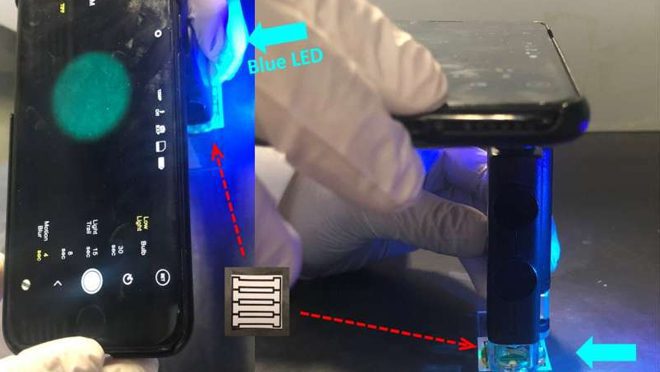Norovirus is effectively found on the cruises and ships. They are infamous for causing viral diseases in a huge number. The research team is working on a simple yet effective way to fight the norovirus. Researchers have finally found a way to detect this virus. They have proposed to use a smartphone-based portable device to identify the norovirus particles in the water bodies.
It seems like they will be presenting the final results at the American Chemical Society Fall 2019 National Meeting & Exposition. Organizations like the National Science Foundation, Water and Environment Technology Center at the University of Arizona, Tuscan Water, etc. are supporting this exceptional project and providing funds and other necessities to the research team.

What is norovirus?
It is a kind of virus that mostly outbreaks in the cruises and ships. As a result, people fall sick and show symptoms of severe vomiting, diarrhea, and stomach pain. This virus is highly infectious. According to the scientists, this virus can also be in effect near our locality and cause contagious viral diseases. Viral outbreaks can occur through food and water in municipal water systems, schools, restaurants, etc.
On the research
According to a Ph.D. researcher, Jeong Yeol Yoon, it only takes a minimal amount of norovirus particles to cause an infection in humans. Therefore, they had needed a sensitive detection method to detect it. He said:
Also, scientists aren’t able to culture norovirus in the lab, and available antibodies to the pathogen aren’t very strong. – ACS report
As a result, detecting small amounts of norovirus in water or food sample takes several hours. It must be conducted in a lab by trained personnel. This detection process involves a polymerase chain reaction-based method.
For further researching materials, the team developed a smartphone-based device. This device can detect low levels of norovirus after measuring the light scattered from virus-bound polystyrene beads in a paper microfluidic chip. In Yoon’s words:
Even though our detection limit was really low, the problem was that norovirus can be infectious at even lower concentrations. When we talked about this work at conferences, the feedback we received was that we need to provide an even easier method that can detect much lower concentrations of virus.
While detecting the virus
To follow up the research, the team transformed an ordinary smartphone into a fluorescence microscope and attached a commercially available light microscope accessory, a separate light source and two band-pass filters to it.
To a channel of their paper microfluidic chip, they added a water sample containing norovirus. After that, they added a suspension of fluorescent beads with antibodies against norovirus attached to them. The capillary action of the paper caused the two liquids to flow and mix. Each norovirus particle bound to multiple fluorescent beads via their attached antibodies. This caused the beads to be aggregate and produced a much larger size of the fluorescent image.
After the process was finished, the team took photos of the chip with their smartphone-based fluorescence microscope. Finally, an app calculated norovirus concentrations from the pixel count of the images. As Yoon says:
The lowest detection limit corresponded to about 5 or 6 norovirus particles per sample, so it’s very close to the single-virus level. Because as few as 10 virus particles can cause illness in people, the new method is sensitive enough for practical applications. – ACS report
Improvising the device
The team has recently made the system more compact and easy to handle. They have enclosed the fluorescent microscope, light source and optical filters in a 3D-printed case.
They also developed a cloud-computing app to analyze the large images. This process will help to send the results back to the smartphone. Additionally, they have also discovered how to concentrate samples within the paper chip so they can analyze much larger sample volumes.
The improvised device can detect even a tiny amount of norovirus in both purified water and reclaimed wastewater. Yoon thinks that the municipal water systems staff could use the device to check the presence of norovirus in the water supply. He said:
We believe that the chlorine in tap water is affecting the assay. We don’t think it will be a problem to treat the water to remove chlorine before performing our method. – ACS report
The research team is working together with Kelly Reynolds to asses the fieldwork.
The team also aims to analyze fecal samples to detect the virus among patients at an earlier stage. Early detection might also help to stop the spread of disease in isolated, crowded places. It is difficult to port the ships for the patients in the middle of the journey to provide them medical help. According to leader Yoon:
When norovirus reaches levels detectable by other methods, the person is already seriously ill. But if we can detect the virus earlier, they can receive medical care sooner. – ACS report.




